Brighten Up your Space: Home Lighting Guide
Create comfortable and welcoming spaces with this useful guide to lighting for your home.
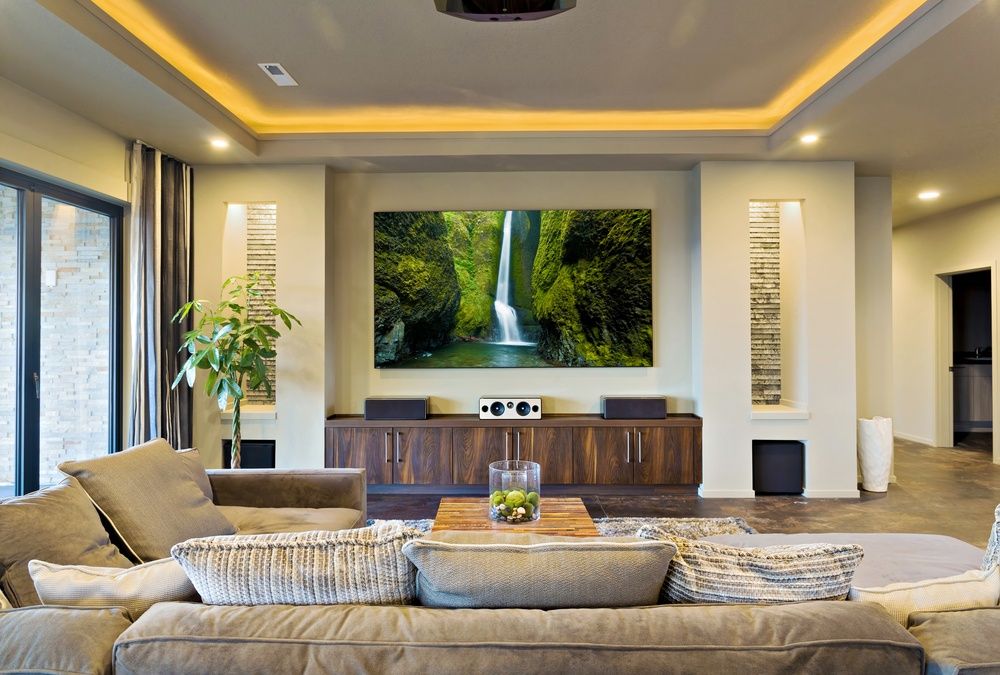
Lighting can transform your space from dark and dull to cozy and warm. There is more to lighting than ceiling lights - you can use many light fixtures to create the right mood and atmosphere. Before you go ahead and choose your light fixtures, you need to understand how lighting works and how to properly set it up in your home.
In this post, we look at creating the perfect atmosphere for all occasions with the right light fixtures, shapes, sizes, and styles. This handy lighting guide looks closer at home lighting options and provides essential tips on selecting and using the right lamps and fixtures.
Different lighting types
When designing a space, lighting can make or break your room's ambiance. From natural lighting to artificial-created one, light plays a significant role in creating an inviting atmosphere. By understanding these two types of lighting and how they work together in your home, you can easily transform any living space into an aesthetically pleasing environment.
Natural light
Natural lighting is one of the most important elements in any home, and its warm, inviting quality can improve both the look and feel of any space. Natural light provides many benefits, such as reducing energy costs, improving air quality, promoting good health and productivity, as well as creating an inviting atmosphere.
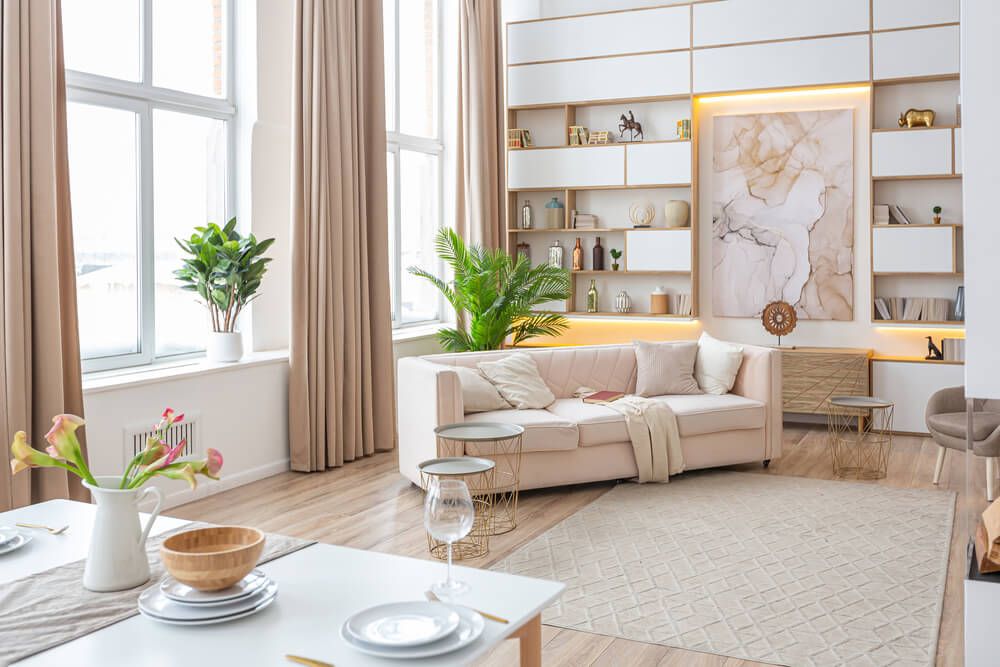
Natural light also allows for more flexibility when it comes to design by allowing for different styles, colors, patterns, and shapes throughout a space without having to rely on artificial lighting sources.
With the right placement of windows and furniture, natural light can be used to brighten up darker rooms or create a cozy atmosphere in an otherwise dull room. Natural lighting can easily be controlled using blinds or curtains if needed for privacy or light control.
Artificial Light
Artificial lighting is a great way to create a variety of moods and atmospheres throughout a space. Though it doesn't provide the same natural feel as sunlight, artificial lighting still serves as an important element in home design.
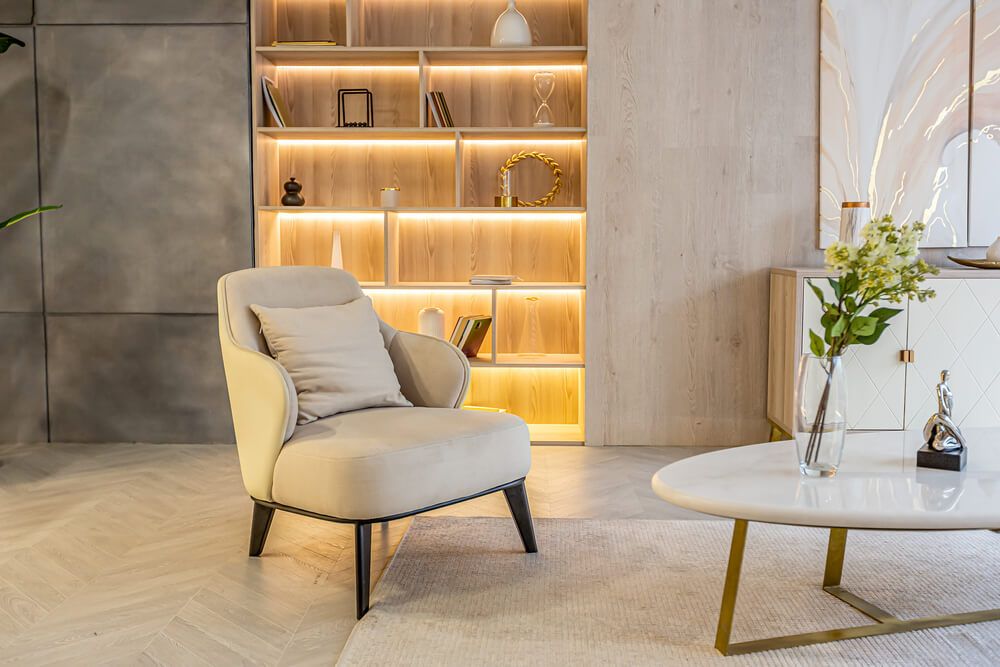
Artificial light comes from lamps, fixtures, and bulbs and can be used to accentuate certain objects or areas in a space. Different shapes, sizes, styles, and intensities of artificial light allow for many different looks within a space, depending on the desired atmosphere.
With the right kind of lighting, you can transform any living space into an aesthetically pleasing environment that is comforting and inviting. Artificial lighting also allows for more control over brightness levels to reduce eye strain when necessary or create certain tasks easier, such as reading or writing.
Different light fixtures for home
Now, let’s take a closer look at the different types of light fixtures you can use to illuminate your space.
Table lamps
Table lamps are an excellent tool for creating specialized areas in a home. For your living area, using softer, calming lighting is ideal. You can use it to create the perfect space for unwinding with a book or relaxing while watching a movie. Lighting can help you decompress after school or work while you get cozy under a blanket.
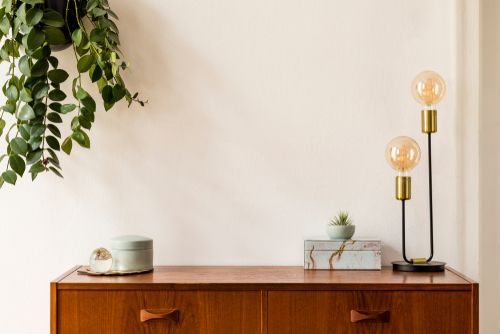

Use table lamps in all rooms
In contrast, these types of lamps would not be the best option for a study or home office. Task lighting, such as table and work lamps, is far more suitable in a home office or study room. Use brighter light here to help complete tasks while keeping the mood focused.
Fortunately, table lamps come in a variety of shapes, sizes, colors and styles - from small bedside lamps to larger side table lamps - so there's likely to be something that suits your taste.
Floor lamps
Floor lamps are an excellent tool for interior design, offering both versatility and practicality that can make a big impact on any room. They are often one of the first fixtures chosen because of their ability to maximize vertical space. By using tall lamps, you can minimize floor space and create a sense of openness. It's one of the oldest tricks interior designers use to make a room look bigger.
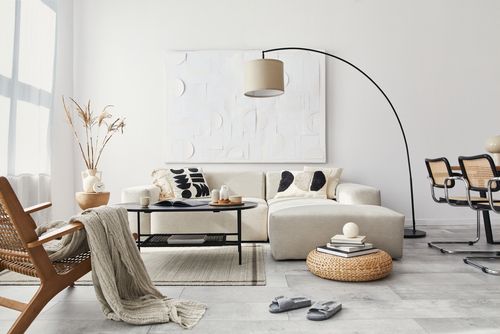
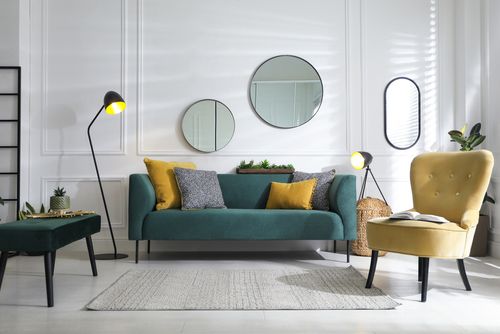
Make statement with a floor lamp
It's important to note that these lamps suit all lighting needs, whether you're looking for ambient, task, or accent lighting. They are incredibly versatile and can be used individually or with other light sources to achieve different effects.
Because of their portability, floor lamps can be used in multiple rooms for different purposes. For example, a beautiful floor lamp emitting ambient light would be a perfect addition to a reading nook. You could also use it to highlight an architectural feature you love.
Ceiling light fixtures
Designers agree that one light source in a room is not enough. You can mix up the lighting by making the most of your ceiling lights. Ceiling lights are a great way to add ambient lighting and brighten a room. They are most commonly placed over a seating area or in the center of the room, usually over a couch or dining table.
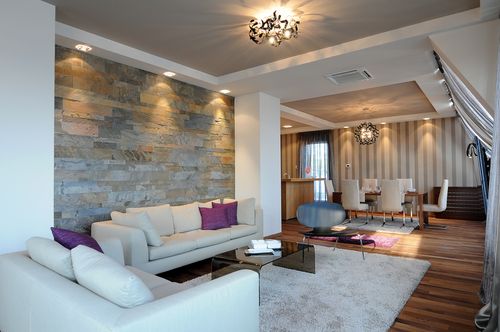
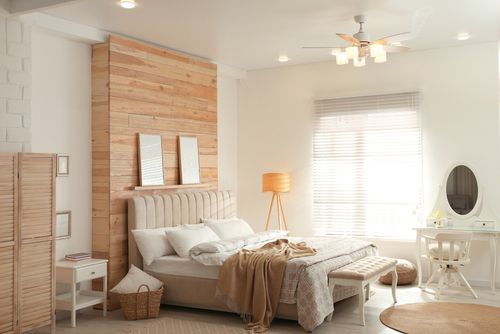
Ceiling lights can brighten up any room
They range from flush-mounted light fixtures to more elaborate chandeliers in various styles that complement any room's decor and design. LED recessed lighting is also popular, allowing for softer illumination that won't take up too much space.
Pot lights or pendants can be also be used as accent lights to direct attention away from general lighting areas and toward specific furniture pieces or artwork on the walls.
Wall fixtures
Sconces are another great way to brighten up dark corners while adding charm and character. All these types of ceiling lights can be used in combination with each other to achieve the desired effect in any given room. They can also be great space savers as they don’t require any floor space.

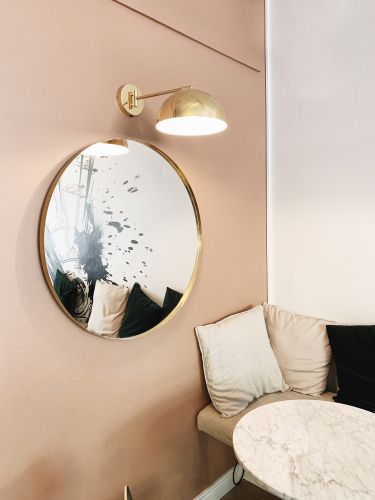
Sconces are space savers but can't be moved esily.
They are a lot like table lamps but can be installed without a counter, table, or desk space. One downside, however, is that once they are installed, you can’t really move them around or from one wall to the other, like you can with a lamp. That’s why you need to plan carefully when choosing the design and placement.
Sconces come in all shapes and sizes and offer styles ranging from modern and minimalist to traditional and rustic. Depending on what you want to achieve, they can be a great asset. You can use also use sconces instead of lamps on your side table, to save on space or to highlight an art work.
Vintage lighting
Now that you understand lighting basics and placement down, it's time to consider style. Vintage lighting fixtures are a trend that continues to stay popular in interior design. They are often used to create a cozy and nostalgic feel in a home.
Vintage light fixtures are the perfect accessory for creating opulence and luxury. Use a beautiful chandelier or sconces to add some old-world charm or create a unique focal point in any room.

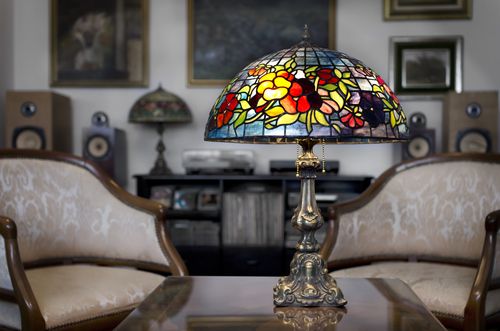
Painted or colored glass pendants are a great choice for a rustic, country vibe or if you want to add some Boho vibes to your space. Fabric lampshades are also a popular addition that adds vintage vibes to your room, especially if combined with the right furniture.
There are plenty of options, and you're sure to find a lamp that will work perfectly in your space. If you're leaning towards a vintage look, check out flea markets and second-hand stores for a chance to score some authentic finds.
Modern lighting
Lighting can illuminate and bring beauty to any space. Modern lighting, in particular, offers the added benefit of character and has the power to transform a room into something extraordinary.
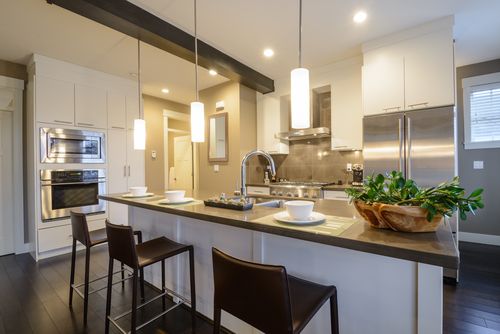
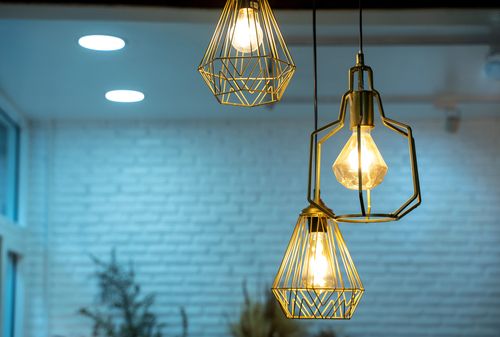
Modern ligthting takes inspiration from the old.
Often inspired by vintage designs, modern light fixtures incorporate more technology, better efficiency, and use more renewable or sustainable materials. To add a modern touch to the kitchen, opt for LED wraparound lights. Fixures in geometric shapes and exposed bulbs can create a cozy and contemporary vibe.
Another hallmark of modern lighting that you may either love or hate is the use of colors. Instead of traditional white or yellow light, opt for shades of blue, green and red to create a twist on traditional lighting options.
Home lighting options for different rooms
Now let’s look at the different lighting options for different areas of your home.
Entryway lighting
Your entry is one of the most important areas to consider as it gives visitors the first impression of your home. No one wants to be welcomed into a dark and cold foyer. That's why you should install proper lighting to create a warm and welcoming effect. Wall sconces also work perfectly in this area.
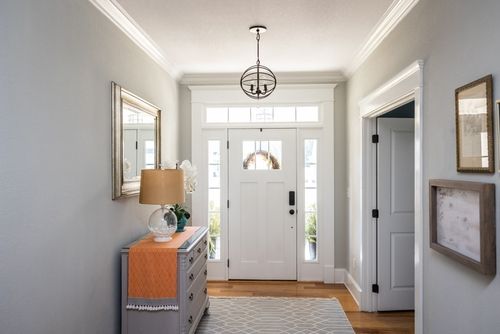
Dining room lighting
Your dining room or area also needs proper lighting to create a welcoming atmosphere and provide enough light for people to see what they are eating. Placing a pendant light overhead will brighten up the table, while additional lights (including dimmers) can create a pleasant ambiance in the room. Perfect for entertaining guests.
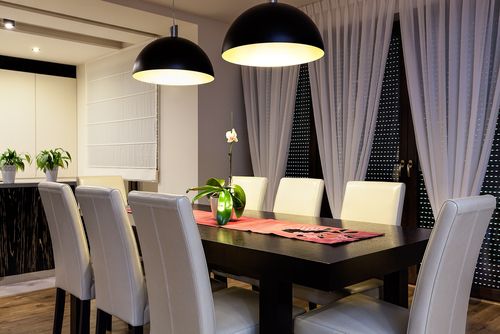
Bathroom lighting
Most of us start and end our day in the bathroom. It should be a relaxing space that is clean and welcoming. Your bathroom is where you can unwind and have time to yourself before you get on with life. With bathrooms, it's important to have good lighting. Bright lights work best, and installing pot lights in the ceiling is one way to keep the room illuminated, clean looking, and sleek.

Conclusion
Proper lighting can transform your room by creating depth and character, depending on how you use it. It can make a small space seem bigger and add warmth to dark and uninviting spaces. No wonder it’s such a big part of interior design.
When considering lighting for your home, make sure to select lights that complement the style of the room and are functional. Where you place them will help you create the desired ambiance and tie the room together.
Want to learn more about interior design basics? Sign up for our Online Course that's perfect for beginners and those looking to update their skills.
